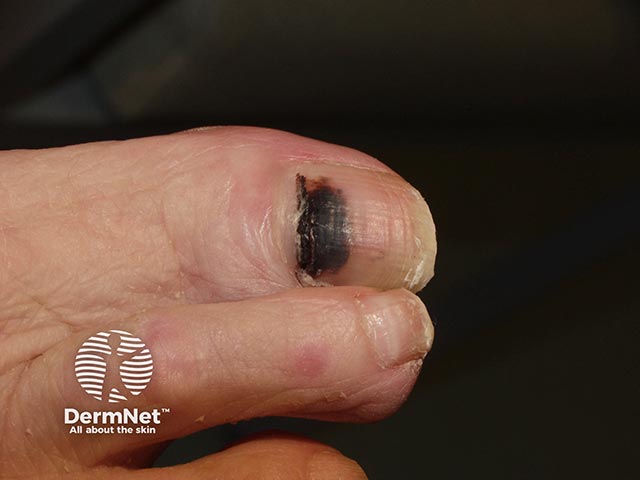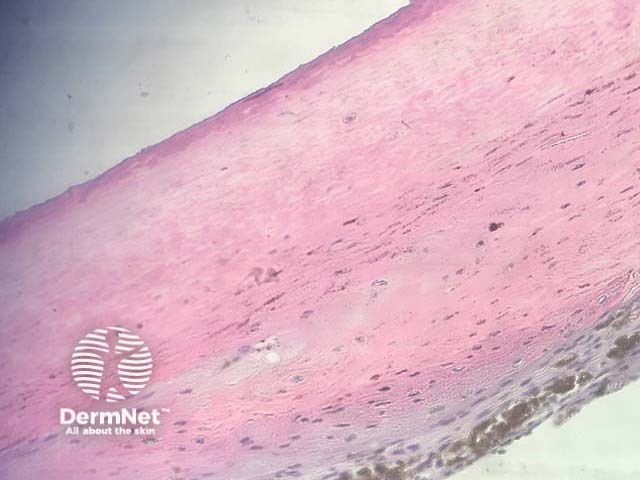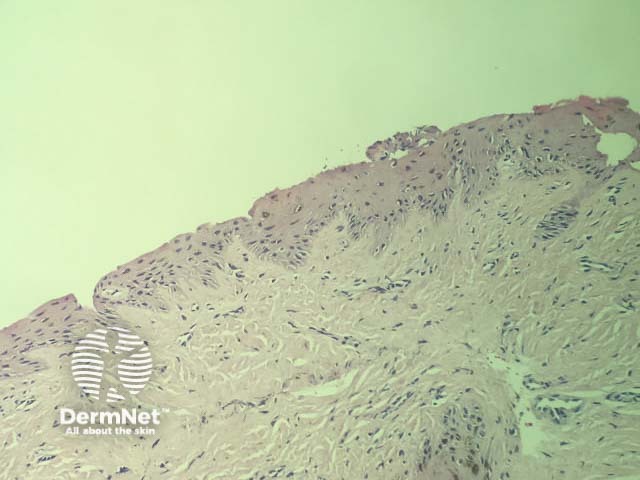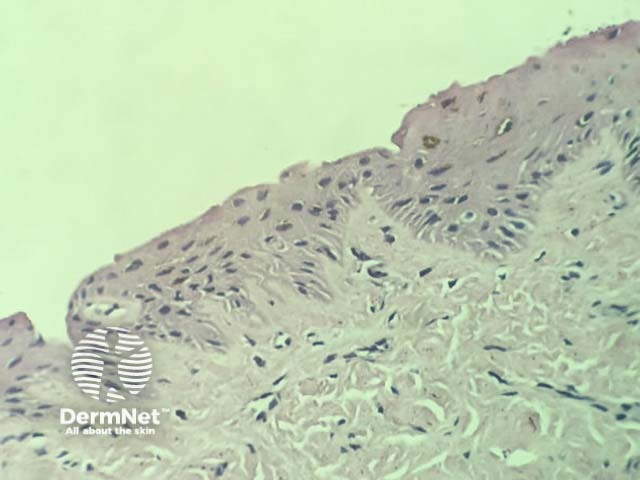Main menu
Common skin conditions

NEWS
Join DermNet PRO
Read more
Quick links
Lesions (cancerous) Diagnosis and testing
Author: Adjunct A/Prof Patrick Emanuel, Dermatopathologist, Clínica Ricardo Palma, Lima, Peru. DermNet Editor in Chief: Adjunct A/Prof Amanda Oakley. Copy edited by Maria McGivern/Gus Mitchell. June 2018.
Introduction
Histology
Special studies
Differential diagnoses
Subungual melanoma is a cancer that arises from a malignant proliferation of melanocytes in the nail matrix. Typically, it presents clinically as a pigmented streak in the nail plate, which slowly expands at the proximal border and may extend to involve the adjacent nail fold (Hutchinson sign; figure 1).

Figure 1
Histopathologically, the nail plate in subungual melanoma will show abundant diffuse melanin deposition (figure 2). Sections of the matrix and nail bed show a melanocytic lesion with poor circumscription, predominantly single-cell growth, and pagetoid scatter (figures 3 and 4). Junctional nesting and confluence may be seen. The majority of cases demonstrate a combination of epithelioid and dendritic cytomorphology. Nuclear atypia and conspicuous nucleoli are often overt but may be subtle.

Figure 1

Figure 2

Figure 3
Immunohistochemistry using Melan-A and SOX10 can be useful in highlighting the extent and pattern of the melanocytic lesion and help to confirm or rule out invasion. Proliferative markers (eg, Ki-67) can be used to highlight an increased proliferative index.
Fluorescent in-situ hybridisation (FISH) may be used to differentiate melanoma from benign melanocytic lesions.
Other diagnoses to be considered include: